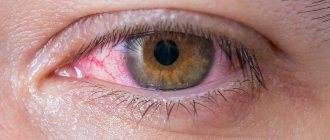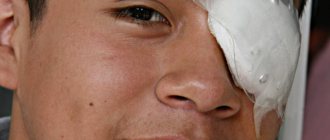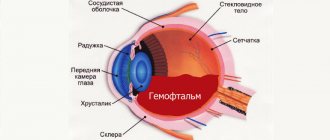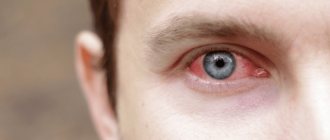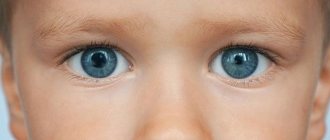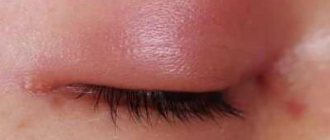Every person at least once in his life has experienced discomfort associated with tearing, burning and itching in the eyes. All these are the first signs of the inflammatory process, which is known to everyone as conjunctivitis. This disease usually affects the mucous membrane of the visual organ and, as a rule, is accompanied by other even more severe and pronounced symptoms.
At such moments, a person experiences painful sensations that not only prevent him from leading his usual way of life, but also physically exhaust him. During the acute period of the disease, the patient is most often concerned with one question: how long will this condition last? In order to accurately determine the time required to eliminate the unpleasant symptoms of inflammation, it is necessary not only to establish the causes that caused it, but also to promptly seek qualified medical help.
After all, even though conjunctivitis is a disease that can go away on its own, you should not let this process take its course. The thing is that some types of such inflammation can lead to consequences dangerous to human health and therefore it is no longer possible to do without long-term and serious therapy in this situation. And if conjunctivitis does not go away for a long time, then this is an alarming signal that some serious mistakes were made in the prescribed treatment, or it is completely absent.
What factors determine the treatment time for conjunctivitis?
Conjunctivitis, like any inflammatory process, is subject to certain biological laws. They determine the symptoms of the disease and influence the duration of the recovery period. Unfortunately, it is impossible not to stop, much less cancel, inflammation that has already begun in the human body. But it is quite possible to speed it up and thereby quickly relieve the patient from painful symptoms. To do this, you must first seek help from a doctor who, based on the patient’s complaints and a thorough laboratory examination, will be able to establish an accurate diagnosis and determine the permissible period of treatment.
It is important to note that the duration of the inflammatory process on the mucous membranes of the eye is directly influenced by the following factors:
- form of conjunctivitis: chronic or acute;
- type of inflammation: viral, bacterial, fungal, allergic or a combination of several types of pathogenic pathogens;
- cause of the disease: injury, cold, infection, vitamin deficiency, herpes, allergen influence, hypothermia, chemical or toxic burn of the eye;
- the nature of changes in the mucous membrane: catarrhal, follicular, membranous, papillary and purulent;
- timeliness of treatment started;
- the severity of conjunctivitis due to the presence of other chronic or concomitant pathologies in a person.
It is the specific combination of all these signs that will determine how long the recovery process will take. For example, everyone knows that bacterial membranous conjunctivitis takes much longer to cure than catarrhal viral conjunctivitis. But if viral eye inflammation develops against the background of another severe chronic pathology, then the period of its treatment will also be significantly delayed.
Failure to see a doctor in a timely manner, a chronic form of conjunctivitis, simultaneous eye damage from both a bacterial and viral infection, as well as diagnosing a person with vitamin deficiency, diabetes mellitus, allergies or other chronic diseases, all of this together not only complicates the treatment process, but also significantly prolongs the period recovery.
Diagnosis of the disease
Conjunctivitis is a common inflammatory disease that affects the mucous membrane of the eye. The main manifestations of this pathological condition are the following symptoms:
- discomfort;
- burning, itching in the eyes;
- hyperemia of the sclera;
- increased tearfulness;
- swelling, inflammation of the eyelids;
- increased sensitivity to light.
Most often, symptoms are first observed in one eye, and then move to the other. Detecting conjunctivitis is usually not difficult, since it has specific manifestations. Often the disease even goes away on its own. But still, when the first signs of inflammation of the mucous membrane of the organ of vision appear, it is necessary to consult an ophthalmologist to diagnose the cause of the pathology. Taking into account the pathogen that caused the inflammatory process, the following forms of the disease are distinguished:
- viral;
- bacterial;
- fungal;
- allergic.
Each of these varieties requires special treatment, which the doctor can prescribe only after a thorough diagnosis. For this purpose, the patient is prescribed the following studies:
- biomicroscopy of the eye;
- bacteriological examination;
- study of ocular secretions;
- skin tests;
- Demodex test;
- test for pathogen sensitivity to drugs.
Additionally, other laboratory tests and consultations with other specialists may be prescribed.
An accurate diagnosis is the key to correct and quick treatment
Today, even a person far from medicine knows that the treatment of any disease should be based on establishing an accurate diagnosis. And even if we are talking about conjunctivitis, which can be visually recognized and diagnosed even without the help of a doctor, then here too you need to take this procedure seriously. Often, identifying conjunctivitis is not difficult for anyone. Indeed, regardless of the causative agent of the disease, you can see and, even more so, feel the unpleasant symptoms of eye inflammation based on a set of characteristic signs that are inherent in absolutely all types and forms of conjunctivitis:
- burning and itching in the eyes;
- severe redness of the white of the eyeball;
- swelling of the lower and upper eyelids;
- feeling of sand in the eyes;
- photophobia;
- profuse lacrimation.
How does conjunctivitis occur, how does it manifest itself and how long does it take to treat?
With conjunctivitis, the connective membrane of the eye becomes inflamed. This disease occurs quite often and is accompanied by a set of symptoms typical of many eye ailments: itching, burning, excessive lacrimation, increased sensitivity of the visual organs to
In this article
- How does conjunctivitis occur, how does it manifest itself and how long does it take to treat?
- How long does it take to treat bacterial conjunctivitis?
- How many days does viral conjunctivitis last?
- How long does adenoviral conjunctivitis last?
- How many days does allergic conjunctivitis last?
to the world
The term "conjunctivitis" is a general term for several ailments in which inflammation affects the conjunctiva. Depending on the causes, it is divided into bacterial, viral, allergic, etc. This disease may have other names. For example, fungal conjunctivitis is called ophthalmomycosis. Each of these types of pathology has its own distinctive symptoms. There are different types of conjunctivitis according to the duration of the course. In general, the following factors may influence the duration of the disease:
- Type of inflammation - bacterial, adenoviral, herpetic, fungal, chlamydial, allergic.
- Flow form. Conjunctivitis occurs in both acute and chronic forms. It can also be catarrhal, purulent, follicular, membranous. If catarrhal lasts 5 or 7 days, then film usually lasts for several weeks. Acute conjunctivitis develops quickly and is treated in only 7-10 days, while chronic conjunctivitis lasts a long time, sometimes its symptoms with varying degrees of intensity bother the patient for many months.
- State of the immune system. If a person does not take good care of his health, does not exercise, or eats unhealthy foods, then, most likely, conjunctivitis will last a long time. Often for this reason, the disease progresses from an acute form to a chronic one.
- Method of treatment. This disease is treated with medications prescribed by a doctor. It is very important to start taking them in the first days of inflammation. Attempts to get rid of the disease using folk remedies lead to complications. In such cases, the illness lasts more than one week. The duration of treatment will depend on the causes and nature of the complications.
Let's take a closer look at the different types and forms in which conjunctivitis occurs, and find out how long it takes for the disease to go away with full-fledged drug treatment.
Conjunctivitis does not go away for a long time - reasons
Any inflammation of the mucous membrane of the eye is called conjunctivitis. As a rule, this term hides a huge number of different diseases, which, although they have similar symptoms, differ in the nature of the development of the disease and, accordingly, are treated with completely different medications.
It is important to know that each type of conjunctivitis has its own incubation period, its own method of treatment, its own method of transmission and the maximum allowable recovery time.
Therefore, if eye conjunctivitis does not go away for a long time, this means that:
- the disease is left to chance;
- the patient self-medicated;
- re-infection occurred;
- a complication has developed due to the disease;
- the cause of inflammation is a combination of several types of infections;
- The wrong type of conjunctivitis has been identified and, accordingly, the wrong treatment has been prescribed;
- hygiene rules are not observed.
That is why, at the first symptoms of conjunctivitis, you should immediately visit an ophthalmologist. You should not wait until the disease begins to develop new alarming symptoms, for example, a headache, a rise in temperature, or a deterioration in visual acuity. And then it will be necessary to eliminate not only the cause of the disease, but also to deal with its consequences. You must always remember that the earlier treatment is started, the easier and faster it will be possible to defeat the disease, but only on the condition that a doctor prescribes therapy and makes a diagnosis.
Relapse and prevention of chronic conjunctivitis
The average duration of treatment for conjunctivitis is from 7 to 14 days under medical supervision. Chronic conjunctivitis can be cured with great difficulty; inflammation and relapses are quite common.
High-quality and competent treatment is guaranteed only by constant, persistent therapy and one hundred percent elimination of the causes of the disease, which is only possible with a personal consultation and external examination of the eyeball by an ophthalmologist.
If the treatment prescribed by the doctor does not produce results for a long period of time, then the patient needs to undergo special ophthalmological and laboratory diagnostics:
- viziometry - reveals a decrease in visual acuity;
- biomicroscopy - identifying changes in the transitional folds of the eyelids and conjunctiva;
- bacteriological culture - this analysis is indicated to determine the causative agents of chronic conjunctivitis.
Due to the existence of numerous types of tests, during a personal examination the doctor himself will prescribe the necessary procedures for each specific case.
Treatment period for viral conjunctivitis
The duration of treatment for conjunctivitis in both adults and children depends, first of all, on the type and form of the disease. For example, inflammation of the eyes caused by a viral infection may go away on its own. This type of disease mainly includes cold conjunctivitis caused by an adenovirus. It usually passes quickly and is tolerated quite easily by both adults and children. But if the disease is complicated by other pathologies or caused by the herpes virus, then the recovery time can take up to three weeks.
Duration of treatment for bacterial conjunctivitis
In some cases, a few days are enough to eliminate bacterial conjunctivitis, and in difficult situations, treatment can take up to five weeks. The duration of therapy for this type of inflammation is influenced by a combination of factors, which include:
- spectrum of action of the antibacterial drug prescribed by the doctor;
- the use of other drugs as part of complex therapy;
- the patient has chronic diseases;
- type of pathogenic microorganism.
The main culprit of bacterial conjunctivitis is Staphylococcus epidermidis. It's no secret that this type of pathogenic bacteria is always present in the microflora of every person's eye. They calmly coexist with other beneficial microorganisms and do not cause any harm to the eye of their owner. But as soon as the human immune system fails, this type of bacteria becomes active and begins to multiply vigorously, thereby causing an inflammatory process on the mucous membrane of the eyeball. A characteristic symptom of bacterial conjunctivitis is purulent discharge that appears on the eyelids and eyelashes of the visual organ. As a rule, this type of inflammation is treated the fastest. It is enough for the patient to wash his eyes with antiseptics, but antibiotics are prescribed only in the most severe cases.
If the inflammation is caused by pneumococcal infection, then this type of conjunctivitis may be accompanied by elevated temperature and more pronounced symptoms. Its treatment usually takes about two weeks, but only if the disease is mild or moderate in severity.
The most dangerous eye infection is bacterial gonococcus. The carriers of this disease are people suffering from gonorrhea. You shouldn’t joke with this type of conjunctivitis, as it can quickly lead to the death of the visual organ. This type of conjunctivitis takes a long time to be treated and must be treated in a hospital setting. The recovery period depends on the degree of eye damage and the effectiveness of the prescribed therapy.
Another equally dangerous and insidious infection that affects the eyes is chlamydia. The difficulty of treating such conjunctivitis lies in the fact that by its type this microorganism combines the properties of both a virus and bacteria. This infection spares neither adults nor children, and the number of cases of infection is about 15% of the total number of all cases. The incubation period usually lasts 1-2 weeks, and for the disease to completely go away it will take at least 14 days.
Therapy for adults
Treatment for viral conjunctivitis should be comprehensive. The person is prescribed antibacterial, antiparasitic, and antifungal therapy. And also anti-allergic and immune. This allows you to eliminate the cause of the infection and cure the disease.
To make viral conjunctivitis go away quickly, use drops such as:
- "Tobrex" (0.3% solution) is a strong and fast-acting antibiotic. Treatment is prescribed exclusively by an ophthalmologist.
- "Florental" (0.1%) is a drug that neutralizes the activity of viruses. Apply 1-2 drops 6 times a day.
- "Gludantan" (0.1%) is a drug with a neutralizing effect on viruses. 1-2 drops are instilled about three times a day. For complex conjunctivitis, up to six times a day.
- Tebrofen (0.1%) is an antiviral drug. Drop 1-2 drops 3 times a day. In case of complications, the dose is prescribed by a specialist.
- "Floxal" (0.3%) - has an antibacterial effect. Instill 1-2 drops 4 times a day. Carry out treatment for no longer than two weeks.
- "Albucid" (20% or 30%) - has an antimicrobial effect, relieves redness. Drop 1-2 drops 3 times a day. The disadvantage of Albucid is a burning sensation in the eyes, so it is better for children to drip a 20% solution.
- "Oftadek" (0.02%) - an antiseptic drug, instill up to 5 times a day, 2-3 drops. Other treatment is prescribed by an ophthalmologist.
In addition, sometimes, in order to cure viral conjunctivitis, additional vision treatment is required: farsightedness, myopia, astigmatism.
Before treating an infection yourself, you should consult an ophthalmologist and carefully read the instructions for use of the medications.
Duration of treatment for fungal conjunctivitis
Until recently, fungal conjunctivitis was considered a fairly rare disease. Typically, the source of such infection was soil, plants, vegetables, fruits, a sick person or animals. But recently, eye mycoses have become quite common. And this is due, first of all, to people’s uncontrolled use of eye drops containing antibiotics or corticosteroids, as well as non-compliance with hygiene rules when wearing contact lenses. Treatment for fungal conjunctivitis can last for years. It is complicated by the fact that inflammation of this type develops very slowly and, as a rule, always takes a chronic form. Today, about 60 species of various fungi are known, which are clinically isolated in pathologies of the organs of vision. It is the persistent and prolonged course of the disease, which can lead to perforation of the cornea and complicates the treatment process.
Therefore, when prescribing treatment, it is very important to determine the type of fungus that provoked the development of the disease. Only by laboratory determination of its nature and the correct choice of antifungal agent can one get rid of such an unpleasant and dangerous disease. Typically, the course of treatment for fungal conjunctivitis is 4-6 weeks, and it must be carried out under the supervision of a doctor.
It is important to know that only complete recovery, which must be confirmed by laboratory tests, can guarantee that the disease will not take a latent form.
Prevention of relapse
The basic rule of prevention is timely and correct treatment. This will allow you to quickly get rid of the disease and reduce the risk of relapse. The repeated development of the pathology is accompanied by a more severe form. This negatively affects visual acuity. Additionally, it is necessary to regularly follow the rules of prevention. Basic recommendations:
- Always observe the rules of personal hygiene. Do not use another person's dishes, towels, bedding or underwear. This also applies to toothbrushes and cosmetics.
- Limit contact with sick people.
- Strengthen the body's protective functions. In this case, a healthy lifestyle, proper nutrition, exercise, and hardening will help.
- Compliance with safety rules in production when working with hazardous substances.
- Strictly do not rub or touch your eyes with dirty hands.
- Use and care for contact lenses correctly.
- Women are advised to use only high quality cosmetics.
- Consult a doctor promptly if suspicious symptoms develop.
Every person should undergo a preventive examination by an ophthalmologist 1-2 times a year. Only a doctor is able to promptly detect infection and the development of eye diseases. Children should also undergo regular check-ups. Every person has a risk of encountering such pathologies.
Treatment of allergic conjunctivitis
As for allergic conjunctivitis, it can go away immediately after the cause of its occurrence is eliminated. That is, after the effect of the allergen on the human body is stopped, all the symptoms of conjunctivitis will gradually disappear. But this does not mean that this type of inflammation is completely cured. As a rule, the treatment of allergic conjunctivitis is a rather lengthy process. It’s just that periods of exacerbation are often replaced by remissions, which allows the patient to get a temporary respite before the next attack of allergens.
Sometimes the cause of conjunctivitis, formed as an allergic reaction, can be banal eye fatigue caused by prolonged visual work. But in any case, the treatment of such conjunctivitis should be based not only on the elimination of irritating factors, but also on daily washing of the eyes with antiseptics. In severe cases, the doctor may prescribe hormonal medications that will help quickly relieve the patient of painful symptoms. The duration of therapy for this type of inflammation is usually 1-2 weeks.
It is important to note that allergic conjunctivitis is not contagious.
Prevention
Timely adequate therapy allows you to get rid of conjunctivitis in 1-2 weeks. But even with proper treatment, relapses are often observed. With each subsequent inflammation of the ocular mucosa, the pathological process becomes more severe and the quality of vision decreases. Therefore, it is important to prevent the disease. To do this, you should follow the following recommendations:
- observe the rules of personal hygiene;
- avoid contact with sick people;
- strengthen the immune system;
- observe safety measures at work;
- touch your eyes less;
- wear contact lenses correctly;
- use high-quality cosmetics;
- treat concomitant diseases.
Author of the article: Kvasha Anastasia Pavlovna, specialist for the website glazalik.ru Share your experience and opinion in the comments.
If you find an error, please select a piece of text and press Ctrl+Enter.
Conjunctivitis is a dangerous disease. Neglecting its treatment can lead to harmful consequences.
Factors influencing the recovery time of conjunctivitis
In the successful treatment of any form of conjunctivitis, properly selected medications play an important role. After all, if you use antibacterial drops to treat viral conjunctivitis, you can cause even more harm to your eye health and complicate the already severe course of the disease. But one should not discount the general principles of treating inflammation, which apply to absolutely any type of conjunctivitis. Effective therapy is not limited to drugs. Following simple hygiene rules and performing a number of important procedures will help speed up the healing process. The patient must have personal household items, wash his hands frequently, not communicate with possible carriers of infection, and not visit public places.
Before the instillation procedure, it is imperative to rinse your eyes, clean your eyelids and eyelashes from dried residues of mucous secretions and pus. This rule, firstly, will help to avoid re-introduction of infection into the eyes, and secondly, it will ease and speed up the course of the disease.




